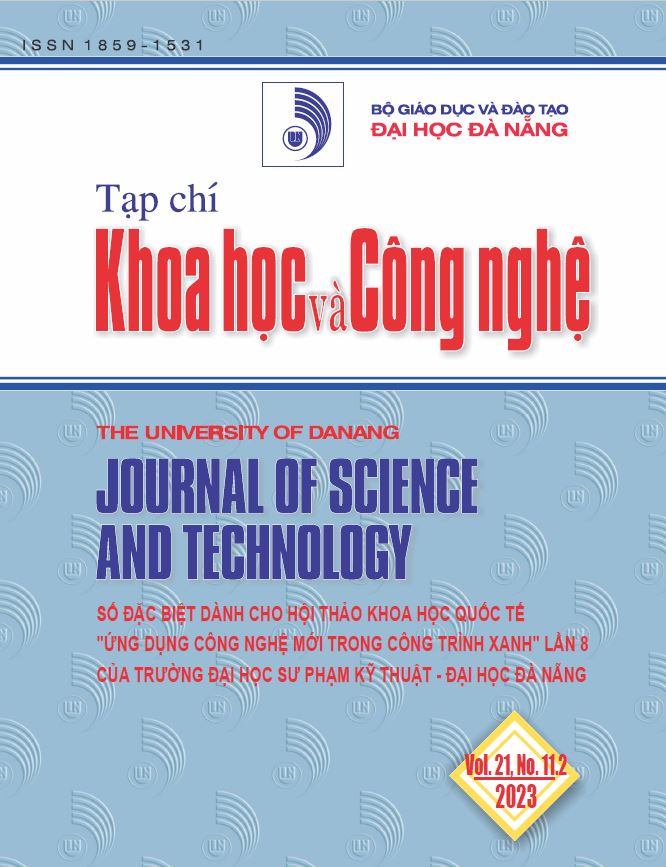Phân tích tính chất từ trong động cơ đồng bộ IPM dùng cho xe điện xem xét đến sự tương tác nam châm – rào chắn từ thông và dòng điện làm việc
 Tóm tắt: 372
Tóm tắt: 372
 |
|  PDF: 447
PDF: 447 
##plugins.themes.academic_pro.article.main##
Author
-
Ho Quang VietThe University of Danang - University of Technology and Education, Danang, VietnamDuc-Kien NgoThe University of Danang - University of Technology and Education, Danang, VietnamNguyen Vu ThanhHanoi University of Science and Technology, Hanoi, VietnamAnh Tuan PhungHanoi University of Science and Technology, Hanoi, VietnamNgo Huy DongHanoi University of Science and Technology, Hanoi, VietnamLe Cong HanThe University of Danang - University of Technology and Education, Danang, VietnamDoan Van KhanhThe University of Danang - University of Technology and Education, Danang, Vietnam
Từ khóa:
Tóm tắt
Bài báo phân tích các tính chất từ gồm từ thông móc vòng và mật độ từ thông khe hở không khí trong động cơ đồng bộ nam châm vĩnh cửu gắn chìm (IPMSM) với nam châm vĩnh cửu (NCVC hay PM) xếp tam giác dùng cho xe điện (EVs). Các mẫu nghiên cứu dựa trên động cơ EM61 của Nissan Leaf từ các báo cáo thử nghiệm và việc phân tích dựa trên phân tích phần tử hữu hạn (FEA). Nghiên cứu điều chỉnh sự tồn tại của NCVC và rào chắn từ thông (FB) cũng như biên độ và góc pha của dòng điện làm việc làm ảnh hưởng đến việc sản sinh mô-men, từ thông móc vòng pha và mật độ từ thông khe hở không khí trong hai điều kiện nhiệt độ. Qua đó ảnh hưởng của từng đối tượng, vị trí (lớp bên trong và bên ngoài của PM và FB) và sự tương tác của PM-FB đến các tính chất từ của IPMSM được thể hiện. Vai trò của các PM-FB đối với các đặc điểm từ tính cũng giúp chỉ ra một số chỉ dấu cho các kỹ sư khi thiết kế.
Tài liệu tham khảo
-
[1] Wang, T. W. Ching, S. Huang, H. Wang, and T. Xu, “Challenges Faced by Electric Vehicle Motors and Their Solutions”, IEEE Access, Vol. 9, No. 1, pp. 5228–5249, 2021, doi: 10.1109/ACCESS.2020.3045716.
[2] Bianchi and S. Bolognani, “Interior PM synchronous motor for high performance applications”, in Proceedings of the Power Conversion Conference-Osaka 2002 (Cat. No.02TH8579), IEEE, 2002, pp. 148–153. doi: 10.1109/PCC.2002.998538.
[3] Kong, M. Lin, and L. Jia, “A Novel High Power Density Permanent-Magnet Synchronous Machine With Wide Speed Range”, IEEE Trans Magn, Vol. 56, No. 2, pp. 1–6, Feb. 2020, doi: 10.1109/TMAG.2019.2947611.
[4] -I. Kim, Y.-K. Kim, G.-H. Lee, and J.-P. Hong, “A Novel Rotor Configuration and Experimental Verification of Interior PM Synchronous Motor for High-Speed Applications”, IEEE Trans Magn, Vol. 48, No. 2, pp. 843–846, Feb. 2012, doi: 10.1109/TMAG.2011.2174045.
[5] Zhu, W. Wu, L. Quan, Z. Xiang, and W. Gu, “Design and Multi-Objective Stratified Optimization of a Less-Rare-Earth Hybrid Permanent Magnets Motor With High Torque Density and Low Cost”, IEEE Transactions on Energy Conversion, Vol. 34, No. 3, pp. 1178–1189, Sep. 2019, doi: 10.1109/TEC.2018.2886316.
[6] Song, Z. Zhang, H. Liu, and W. Hu, “Multi‐objective optimisation design and performance comparison of permanent magnet synchronous motor for EVs based on FEA”, IET Electr Power Appl, Vol. 13, No. 8, pp. 1157–1166, Aug. 2019, doi: 10.1049/iet-epa.2019.0069.
[7] Dutta, A. Pouramin, and M. F. Rahman, “A Novel Rotor Topology for High-Performance Fractional Slot Concentrated Winding Interior Permanent Magnet Machine”, IEEE Transactions on Energy Conversion, Vol. 36, No. 2, pp. 658–670, Jun. 2021, doi: 10.1109/TEC.2020.3030302.
[8] G. Dorrell, A. M. Knight, L. Evans, and M. Popescu, “Analysis and Design Techniques Applied to Hybrid Vehicle Drive Machines - Assessment of Alternative IPM and Induction Motor Topologies”, IEEE Transactions on Industrial Electronics, Vol. 59, No. 10, pp. 3690–3699, Oct. 2012, doi: 10.1109/TIE.2011.2165460.
[9] Yang et al., “Design and Comparison of Interior Permanent Magnet Motor Topologies for Traction Applications”, IEEE Transactions on Transportation Electrification, Vol. 3, No. 1, pp. 86–97, Mar. 2017, doi: 10.1109/TTE.2016.2614972.
[10] A. Rogers, Annual Progress Report for the Advanced Power Electronics and Electric Motors Program. US Department of Energy, 2013.
[11] M. Miller, Electric Motor R&D. Oak Ridge National Laboratory, 2013.
[12] Burress, Benchmarking State-of-the-Art Technologies. Oak Ridge National Laboratory, 2013.
[13] Burress, Benchmarking of Competitive Technologies. Oak Ridge National Laboratory, 2012.
[14] E. Neapolitan and K. H. Nam, AC Motor Control and Electrical Vehicle Applications. CRC Press, 2018. doi: 10.1201/9781315200149.
[15] Ngo and Hsieh, “Performance Analysis of Synchronous Reluctance Motor with Limited Amount of Permanent Magnet”, Energies (Basel), Vol. 12, No. 18, p. 3504, Sep. 2019, doi: 10.3390/en12183504.
[16] S. Mirazimi and A. Kiyoumarsi, “Magnetic Field Analysis of SynRel and PMASynRel Machines with Hyperbolic Flux Barriers Using Conformal Mapping”, IEEE Transactions on Transportation Electrification, Vol. 6, No. 1, 2020, doi: 10.1109/TTE.2019.2959400.
[17] Bianchi, H. Mahmoud, S. Bolognani, H. Mahmoud, and N. Bianchi, “Fast synthesis of permanent magnet assisted synchronous reluctance motors”, IET Electr Power Appl, Vol. 10, No. 5, pp. 312–318, May 2016, doi: 10.1049/iet-epa.2015.0240.
[18] Staton and J. Goss, Open Source Electric Motor Models for Commercial EV & Hybrid Traction Motors. CWIEME 2017, 2017.
[19] R. Vartanian and H. A. Toliyat, “Design and comparison of an optimized permanent magnet-assisted synchronous reluctance motor (PMa-SynRM) with an induction motor with identical NEMA Frame stators”, in 2009 IEEE Electric Ship Technologies Symposium, IEEE, Apr. 2009, pp. 107–112. doi: 10.1109/ESTS.2009.4906501.



